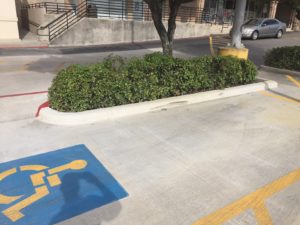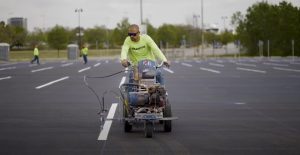 Many people take the markings in parking lots for granted, mistakenly assuming that it is simply a matter of slapping some paint on the pavement. However, parking lot striping requires a great deal of effort and planning to ensure that the lot will be safe and convenient for the people using the lot, enhance the property’s curb appeal and comply with any applicable local and federal guidelines. If you are responsible for maintaining a parking lot, you might find the following information useful.
Many people take the markings in parking lots for granted, mistakenly assuming that it is simply a matter of slapping some paint on the pavement. However, parking lot striping requires a great deal of effort and planning to ensure that the lot will be safe and convenient for the people using the lot, enhance the property’s curb appeal and comply with any applicable local and federal guidelines. If you are responsible for maintaining a parking lot, you might find the following information useful.
Parking Lot Striping – Conditions to Know
Striping parking stalls and applying pavement markings is a bit more complex than most people realize. You need to hire an experienced professional who has the proper equipment, understands compliance issues, knows how the layout can impact your business and understands the right paint to use on the project.
• The right layout can allow you to provide more parking spaces without compromising safety or convenience.
• Traffic aisles can be limited to one-way traffic or provide for two-way traffic. However, the physical requirements differ for the two types of aisles. Furthermore, the choice should be based on the flow of traffic as well as optimize the safety of drivers and pedestrians.
• Not all paints are suitable for all pavements. For example, if asphalt pavement is new or sealed, a water-based paint is typically the best choice; concrete pavement normally requires a rubber-based paint.
• On average, most parking lots need to be repainted every two years. However, you may need to have new paint applied sooner. A general rule is that new paint should be applied if the original visibility becomes reduced by more than 25 percent.
• Although paint may dry in as little as 30 minutes, the parking lot should not be opened to vehicles for at least an hour. Otherwise, tires can smear or track the paint.
• Your existing layout may not comply with ADA standards. According to federal regulations, however, you are legally required to ensure compliance when you have your parking spaces repainted.
• Curb paint can be an important part of your parking lot markings. Typically, curbs painted red signify no-parking areas. Blue curbs usually indicate that the parking is reserved for the disabled. Yellow paint is often used on curbs to indicate that vehicles can only stop in that location for passenger loading or unloading.
• Handicapped parking spaces must include access aisles adjacent to the spaces. The size of these access aisles cannot be included in the measurements used to determine whether the actual parking spaces meet the requirements for length and width.
• If the pavement is soaking up the paint, the markings will be less visible. However, instead of applying a thicker coat of paint, better results will be achieved by applying two thin coats.
• When operated by experienced, well-trained personnel, striping machines can apply markings that are visually appealing, the proper thickness and remarkably straight. However, as sophisticated as these machines are, they are only as good as the operator. A lapse in attention or even a sneeze can result in an error.
A complete striping job should be performed by a qualified professional to ensure regulatory compliance and quality results. Alpha Paving is an Austin based contractor, and our line striping technicians have the knowledge and expertise needed to deliver quality results. We are a respected contractor offering a full range of services, including sealcoating, asphalt paving, concrete installation, asphalt and concrete repairs, parking lot signs, pavement marking, road construction, asphalt milling, asphalt overlays, street maintenance, speed bump installation and parking lot wheel stops. Our customers include a number of shopping malls, municipalities, major retailers, hotels, educational institutions, restaurants, hospitals, office complexes, airports, manufacturing facilities, churches, HOAs and apartment complexes. We have excellent references and a reputation for exceptional workmanship, outstanding customer service and professional project execution. If you would like to receive a free quote, call us at (512) 677-9001 or fill out the online form.






